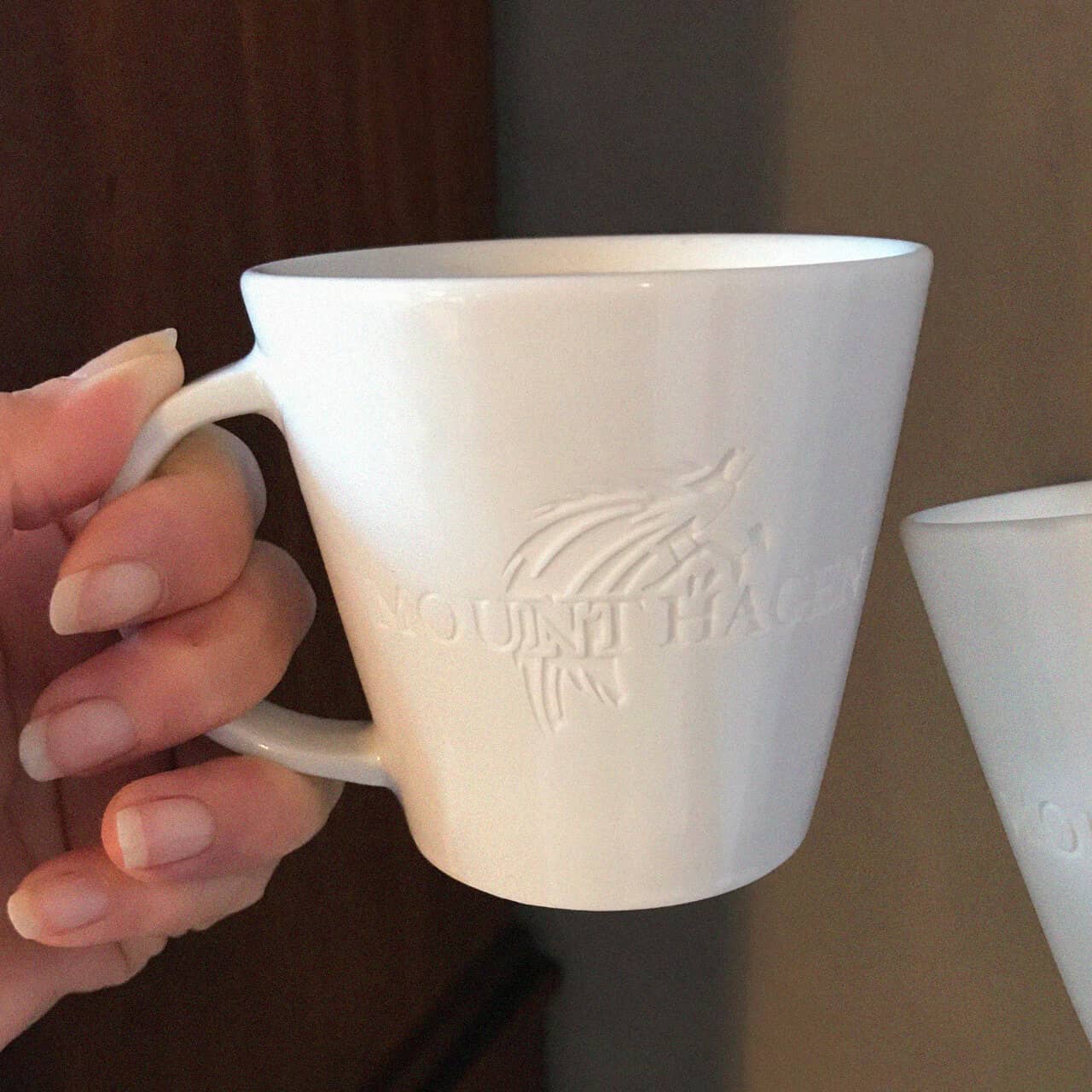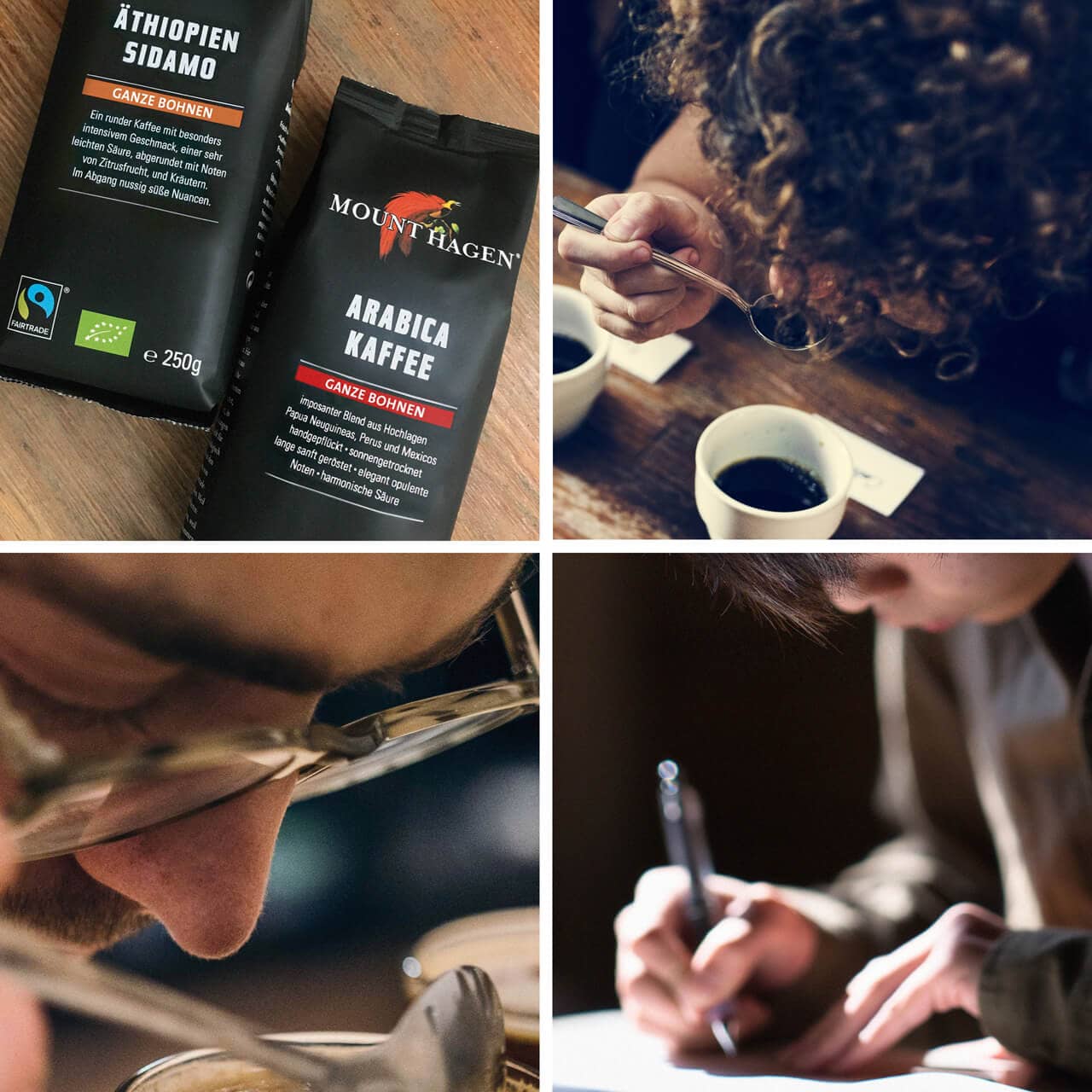- Flavors & Co.
Part 2 of our mini series on coffee tasting at home.

Karsten Suhr
First things first: You do not need any special equipment like a tasting cup. All you need is to be a bit picky and – if possible – a small scale, two small French presses, a notepad, and a pen. Also, a bit of leisure. And of course: Two coffees that are quite different.
Our recommendation: Our house coffee, the Arabica blend, and the single origin from Ethiopia.
Ready, grab a cup, go!

1. step: Brew some coffee.
Probably a no brainer for you, but we say it anyway, just to be safe: To be able to compare the two coffees they need to be prepared the same way. Meaning: With the same amount of coffee (0.4oz), the same grind size (medium-fine), and the same amount of water (7fl oz). The water should NOT be boiling anymore.
2. Prepare each coffee in a French press.
o make it easier to sense the taste nuances. Also, you don’t’ want to risk burning your tongue. Pour the coffee into two (equal!) cups.
3. Allow the coffee to cool down a bit. One small sip from the one cup and a another one from the other cup. Compare them consciously: How do the two coffees differ? Write down your thoughts!
4. Taste them one after the other.
One small sip from the one cup and a another one from the other cup. Compare them consciously: How do the two coffees differ? Write down your thoughts!
Normally, you would slurp the coffee from a spoon and by that, let in some air. Yet, inexperienced tasters tend to have coughing attacks or produce a coffee fountain (including stains in their surrounding). In part 3 of our cupping-series you will learn how to slurp correctly, making a “hiiippphhh”-like sound. Moving on:

photo below left:
battlecreek coffee roasters on unsplash
5. Now, concentrate on the mouthfeel, the texture.
Close your eyes. Does one coffee appear heavier than the other one? Sweeter? Cleaner? Open your eyes and take some notes.
6. Let’s focus on the flavor:
Can you distinguish specific nuances? Write down even your most vague thoughts. No matter how random that might feel at first – it helps.
7. What about the acidity?
Is it fine or rather dominant? Does it appear delicate or dull to you? Write it down!
8. What is your overall impression of coffee number 1?
And of coffee number 2? Are they round? Complex? Try to think of associations like “a ripe apple”. And – you know the drill – take notes.
9. Now, compare your notes with the descriptions on the coffee bags.
You will most likely find some expressions that you were looking for during the tasting. “Flowery”. “Chocolate flavors”. “Hazelnut notes”. And so on.
Doing this will help you train your senses. Even the professionals do it to continuously improve their skills.
Uhhh…well…hmmm?!
You are struggling for words? Don’t worry, that is totally normal in the beginning. Check out our aroma chart for some ideas.
Here, you find a variety of aroma descriptors that you can work with. Perhaps, you could repeat the whole cupping procedure to find out if you already sense something else.
So, there is one final question left: Which coffee do you prefer? Number 1 or number 2?



